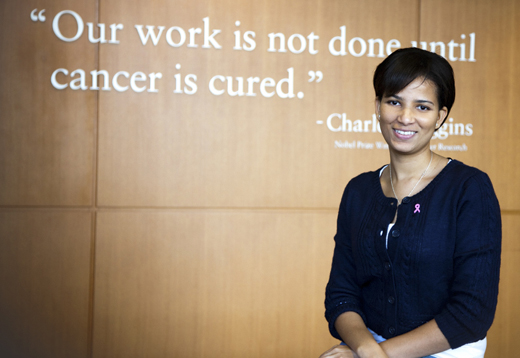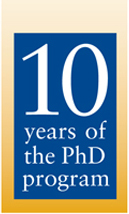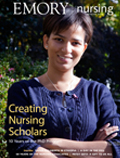Getting down to research: from BSN to PhD

When Jessica Holmes receives her doctorate in 2011, she will be the first to complete a new program that takes students directly from a BSN to a PhD, without stops along the way to practice or earn an MSN.
|
Global science: saving mothers and infants |
The fast-track program is one way in which the School of Nursing is trying to help alleviate the shortage of doctorally trained nursing leaders. At 26, Dr. Holmes easily could spend half a century teaching, conducting research, and helping shape the field of nursing.
The road to her PhD may be straight, but it was not where Holmes thought she was headed several years ago. When she was in high school, her aunt died of breast cancer. Her aunt had assumed that a change in her breast was related to breastfeeding her newborn. Holmes kept asking herself how her aunt, so young, smart, and full of life and plans, could have fallen through the cracks of health care. When Holmes entered Howard University, she decided to study nursing, drawn to the profession’s focus on the individual patient and the social, emotional, and cultural factors influencing that patient’s health behaviors and outcomes.
Her plan to work at the bedside changed after she was chosen for a summer research program at Yale. With scientist mentors, she reviewed the research literature on doctor-patient communications among minority women—women like her aunt. A light went on: health care needed research to pose and answer questions about what worked and why. Someday, when she was old enough and clinically experienced enough, she would like to be part of that. Then Emory nursing professor Ora Strickland came to Howard to talk with senior nursing students about Emory’s BSN to PhD program. It was an easy sell. Holmes graduated in August 2006 and began her doctoral studies at Emory the following month.
Of the 100-plus students in her nursing class at Howard, she was the only one who went straight for a doctorate. But it made sense to her. She knew what she wanted to achieve professionally, and she knew that life happens. The other two students who began the BSN to PhD program with her are taking time out from their studies for maternity leave.
The five-year PhD program is providing Holmes with the skills and knowledge to pursue a variety of paths as a nursing leader. In addition to completing extra courses to replace the MSN, extra clinical coursework has made her eligible to take the nurse practitioner boards in adult and women’s health. She also participates in TATTO (Teaching Assistant Training and Teaching Opportunity), a program that introduces all Emory graduate students to college-level teaching. Holmes’s teaching mentors are Joyce King, for whom she has taught advanced pathophysiology, and family and community health expert Sarah Freeman, in whose basic primary care classes Holmes lectures on breast cancer. Holmes has taken courses in public health, health policy, and other areas that give her the big picture. By the time she becomes Dr. Holmes, she will even have a certificate in women’s studies.
She will be well grounded in research as well. Currently, Holmes is recruiting 120 breast cancer patients from Emory’s Winship Cancer Institute, Grady Memorial Hospital, and Emory University Hospital Midtown to complete her dissertation study on examining racial, ethnic, and other factors that influence a woman’s decision to continue or stop chemotherapy.
“We need more researchers with PhDs for nursing to evolve as a profession,” says Holmes. “There are so many questions waiting to be answered. Everyone wonders about something. It’s important to translate that wonder into action, research it, and find the answer. I love what I do, and I hope that drives me for the next 40 years.”



